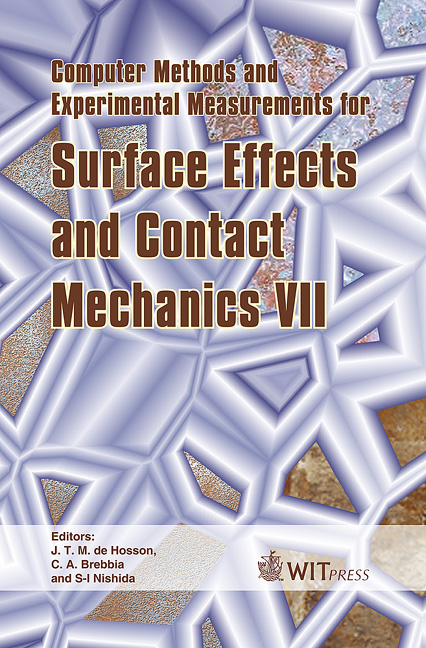Effect Of Local Material Properties On Tapping Mode Atomic Force Microscopy
Price
Free (open access)
Transaction
Volume
49
Pages
9
Published
2005
Size
993 kb
Paper DOI
10.2495/SECM050151
Copyright
WIT Press
Author(s)
W. Xu & P. Wood-Adams
Abstract
The phase image produced by Atomic Force Microscopy is very important in the study of polymeric materials. This image is a map of the spatial variation in the phase lag between the tip oscillation and the driving oscillation, resulting from variations in local properties. We have studied the effect of local material properties and operating conditions by simulating the AFM imaging procedure and by experiment. For hard elastic materials the dominant interaction force between the tip and the sample is the elastic repulsive force. In the case of polymers, which are softer and viscoelastic in nature, both the modulus and the viscosity influence the phase lag with the viscous force often dominating. Additionally, as expected, the phase lag for soft, viscoelastic domains is higher than for high elastic domains. Experiments were performed with silicon (hard and elastic) and polybutadiene (soft and viscoelastic) that validate our simulation results. Experiments also illustrate that the thickness of a polymer film on a substrate influences the phase lag when it is on the order of the radius of gyration of the molecules. This property makes it possible for the AFM to detect sub-surface features through polymer films under certain conditions. The eventual goal of this work is to enable the quantitative as well as qualitative interpretation of phase images of polymeric materials. Keywords: tapping mode AFM, phase lag difference, material properties. 1 Introduction Tapping mode atomic force microscopy (TM-AFM) is used to study the topography and properties of surfaces. In this mode, a cantilever oscillates at or near its resonance frequency. The tip at the end of the cantilever touches and scans the rough surface and the oscillation amplitude changes as the topography
Keywords
tapping mode AFM, phase lag difference, material properties.





